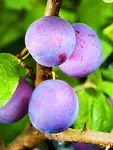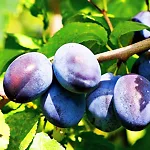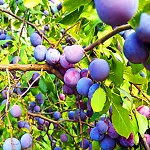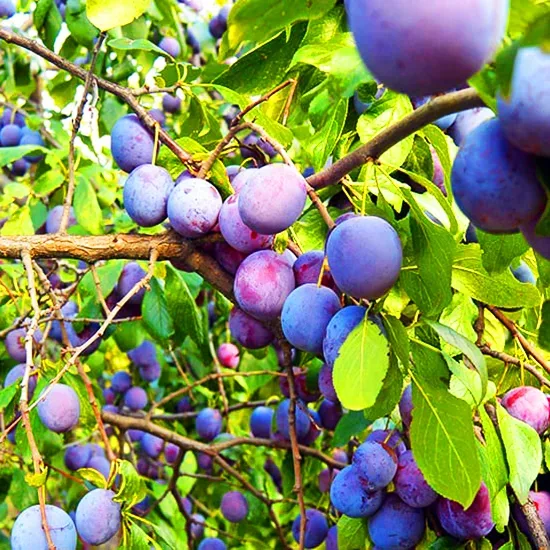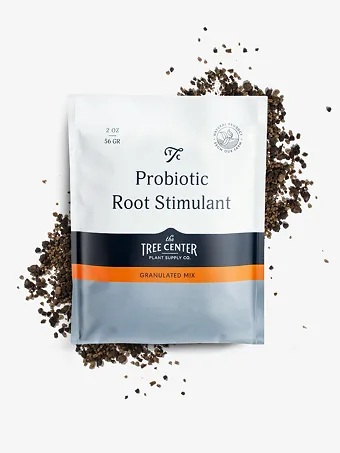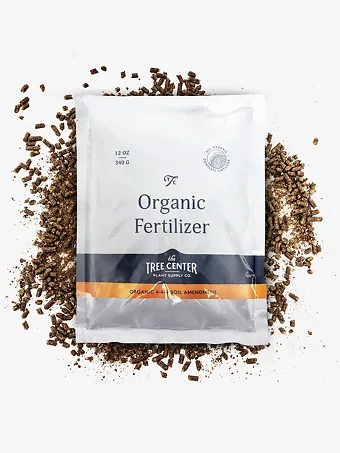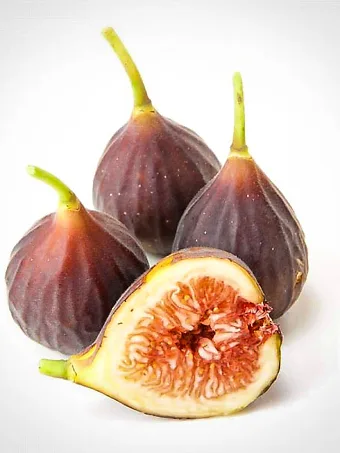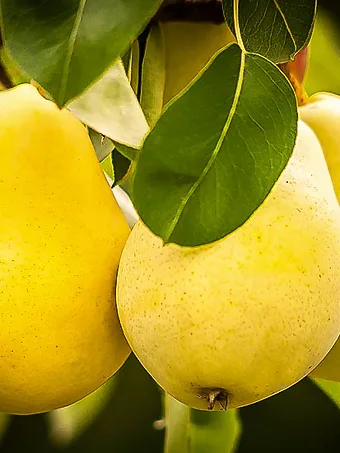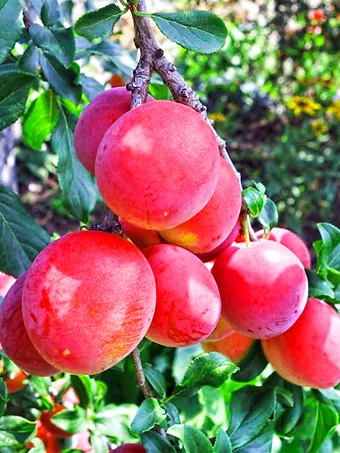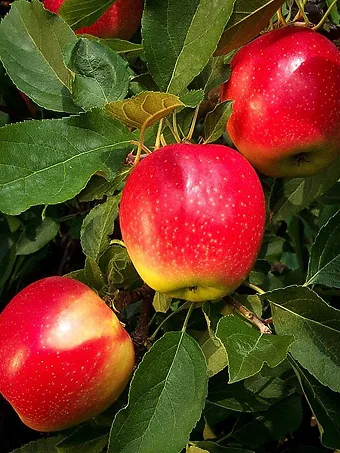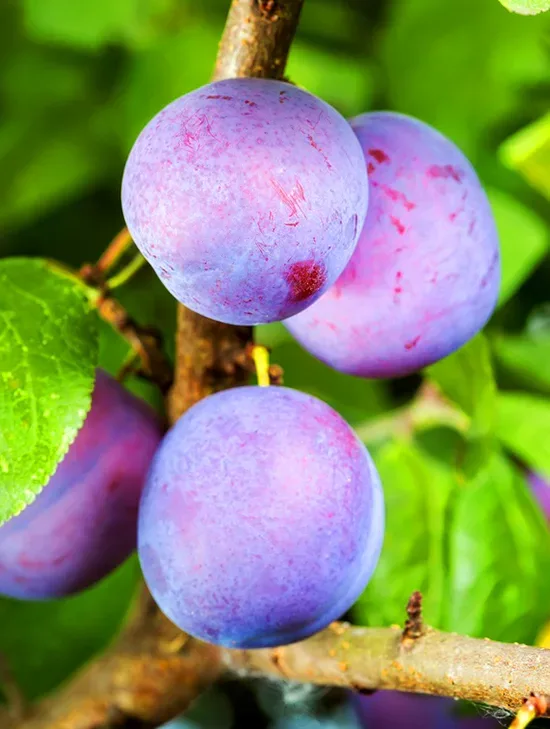
Morris Plum Tree
Prunus salicina x cerasifera 'Morris'View more from Plum Trees
Morris Plum Tree
Prunus salicina x cerasifera 'Morris'
Select Size
30 day - ARRIVE AND THRIVE™ guaranteeLearn more


Special Features

Botanical Name
Prunus salicina x cerasifera 'Morris'
Outdoor Growing zone
5-8
Mature Height
12-15
Mature Width
12-15
Sun needs
Full Sun
The Morris Plum Tree grows some of the most beautiful plums around. The smooth, glossy deep-red skin just says, ‘eat me’, and the dark red flesh has the perfect texture and a sweet tanginess everyone loves. This variety was developed to store well for many weeks in the fridge, and for the disease resistance of the tree. Grow it in all warm zones, where it will thrive and be giving you big harvests within just a few years.
- Beautiful dark red glossy plums with red-purple flesh
- Ready for harvest in early June
- Perfect choice for warm, not hot zones
- Stores in the fridge for 6 to 10 weeks
- Heavy crops within just a few years
Full sun will help your Morris Plum Tree grow a bumper crop, and this rugged tree will grow in almost all well-drained soils, including alkaline and sandy ones. It has good disease resistance and pests are rarely serious. Some simple summer pruning and trimming will help it give the heaviest crop, but little attention is needed for top results. Plant with a suitable pollinator like ‘Burbank’ or ‘Bruce’.
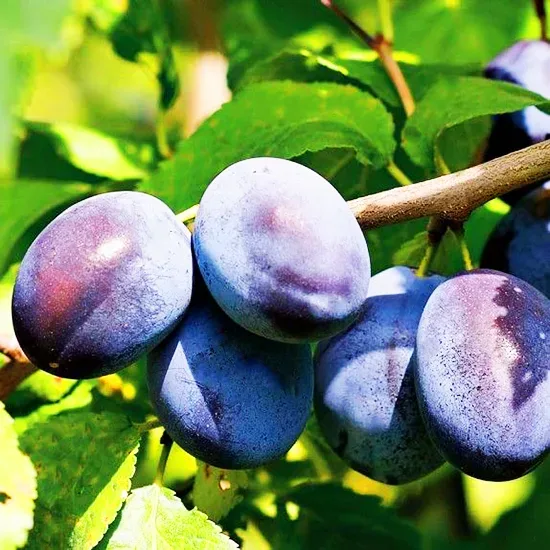
The best eating plums are firm and sweet, and biting through a shiny red skin into a fruit that is still warm from the sun, plucked from a tree outside your door, is a great experience everyone should have. You can have exactly that, in the first weeks of June, with the Morris Plum Tree. This variety is ideal for both warm and cooler parts of the country, and it delivers a heavy bounty of beautiful fruit within just a few years of planting. Other fruit trees take years of careful pruning to carry a significant crop. Not this fast-growing tree, which shoots up, blooms and fruits almost as soon as you plant it in the ground. For eating fresh, baking or for preserves, this is a wonderful all-round plum everyone in your family will enjoy.
Growing the Morris Plum Tree
Size and Appearance
The Morris Plum Tree is a small deciduous tree, relatively compact, growing no more than 15 feet tall and wide, and achieving that size within a decade. It will bear fruit within 2 years, and be well-grown, with a heavy crop, within 5. When mature you can expect yields of 100 pounds of fruit from a single tree. Flowers appear by late March in warmer regions, or in early April, with charming white blossoms clustered along the bare branches. Get ready for an early harvest, because by mid-June you will be picking your crop, and unlike some other plums, this is a variety that stores well. Place ripe fruit in the fridge, and 6 weeks later it will still be in good condition. Some will even be good after a further month. No need for a ‘harvest panic’ – just take your time.
The large fruit is over 2 inches long, and carried reliably in an abundant crop. These are beautiful plums, with a glossy, rich dark-red skin and juicy red flesh. The flavor is of the highest quality, with that perfect sweet/tangy balance, and the texture is firm but soft, without the ‘mushy’ texture of many older varieties. This variety is not self-fertile, so you do need a second tree for pollination. Often ornamental flowering plums that may be growing nearby will do the trick, but otherwise plant a variety like ‘Burbank’ or ‘Bruce’ will do the job, and be mutually pollinated as well.
Using the Morris Plum Tree in Your Garden
This tree is fine as a lawn specimen, and you don’t need an orchard to grow fruit – just a garden. It can be planted at the back of a shrub bed, or as a fruiting screen mixed with other varieties.
Hardiness
The Morris Plum Tree needs a minimum of 800 chilling hours a year, when temperatures are below 45 degrees. So only the coolest parts of zone 8 in the south and central parts of the country are suitable, or of course cooler zones. Zone 8 in the northwest has more chilling hours each winter, so it is completely suitable for this plum. It thrives everywhere in zones 5, 6 and 7.
Sun Exposure and Soil Conditions
Give the Morris Plum Tree full sun for a good crop, and plant it in any well-drained soil, including alkaline and sandy soils. It is very adaptable, and untroubled by the conditions found in almost any garden.
Maintenance and Pruning
The Morris Plum Tree has moderate resistance to diseases, which are not such an issue in cooler zones, anyway. Pests are rarely troublesome, and no special pruning is needed. After harvesting your crop is the best time to prune, and simply shorten to 6 inches long side shoots that are more than 12 inches long – shorter ones need no pruning. Remove some of the interior branches to keep the structure more open and let the sun in to ripen your crop.
History and Origin of the Morris Plum Tree
People from many European countries spread out around the world in previous eras, and South Africa was a popular destination, first settled by Europeans in the 17th century. Like settlers everywhere they bought their plants with them, but European plums didn’t prove very successful there. One that was grown was the cherry plum, or myrobalan, Prunus cerasifera. It originated in southwestern Europe and eastern Asia, and produces small, red edible plums. As Luther Burbank did in America, they too brought over the Japanese plum, Prunus salicina. At some point these two species were crossed together to create a hybrid variety called ‘Methley’. It proved to be a successful grower and good cropper, and in 1922 it was brought to America, and grown in Texas, where the climate is very similar. It has the advantage of being self-pollinating, but it is prone to all the major plum tree diseases, and the fruit soon turns soft and doesn’t store well. Around 1970 plant breeders at Texas A&M University collected some fruit from a tree that had self-pollinated and grew the seeds. Among them was a tree that was more disease resistant, with better fruit texture and longer storage potential. They named it ‘Morris’ when they released it in 1974 and it became a very popular variety for both farmers and home growers.
Buying the Morris Plum Tree at the Tree Center
If you live in a warm area – not too hot and not too cold – then the Morris Plum Tree is the perfect tree for you. Enjoy its disease resistance and great storage ability, and be eating your June plums in September, and what beautiful plums they are. But order now, because this top-selling variety never stays with us long.
